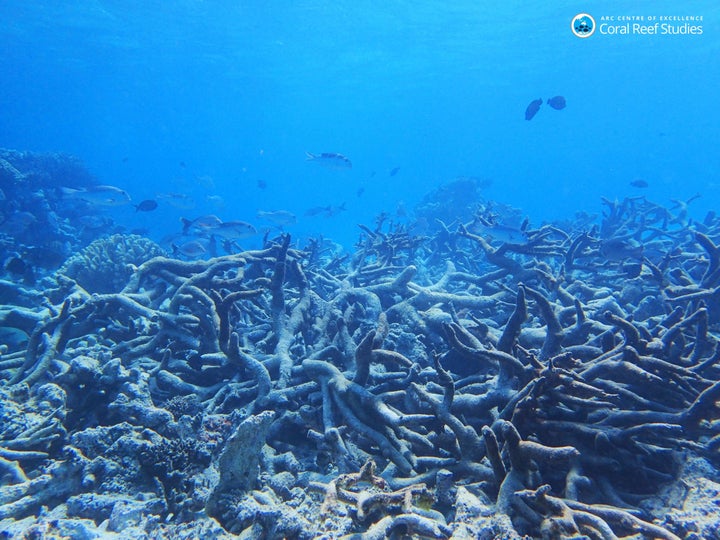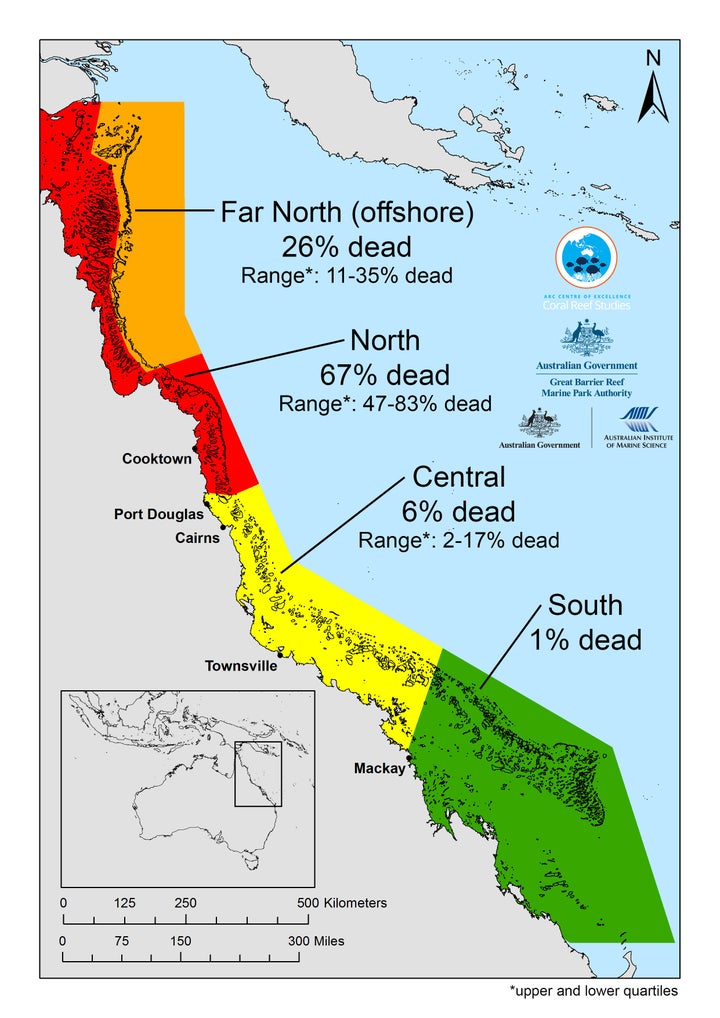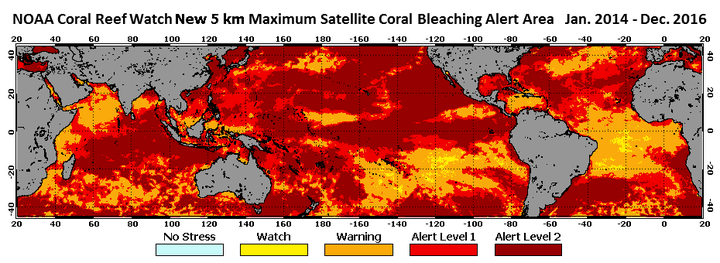The Great Barrier Reef may suffer yet another mass coral bleaching event this year, just months after the last one devastated the planet’s largest living structure.
Scientists at Australia’s ARC Centre for Excellence announced Wednesday a team of researchers were preparing to conduct a week-long aerial survey of the reef as the Southern Hemisphere’s summer came to a close. The surveys echo those made last year in the midst of an unprecedented spate of warm oceans when researchers discovered up to 95 percent of parts of the reef had been bleached.
“We’re hoping that the next two to three weeks will cool off quickly, and this year’s bleaching won’t be anything like last year,” said ARC Centre director Terry Hughes, the lead author of a Nature cover article this week about mass bleaching on the reef, in a statement. “The severity of the 2016 bleaching was off the chart.”

That event, just the third mass bleaching ever recorded, left more than two-thirds of parts of the Great Barrier dead after an unprecedented spate of warm water baked the reef for months.
Bleaching occurs when the sensitive, colorful algae that live inside coral leave, usually when the ocean becomes too warm. The structures are left bright white, and if temperatures don’t return to normal, the coral can die.

Scientists have long said the only way to save the reef is to address climate change ― by far the biggest threat to the underwater ecosystems.
World leaders have rushed to keep the planet from warming far below 2 degrees Celsius, the level scientists say we must stay beneath to avoid the worst effects of climate change. But those effects are already being felt, particularly in the oceans.
The National Oceanic and Atmospheric Administration released a graphic this month showing all tropical oceans on the planet were “unusually hot” from January 2014 to December 2016, a period “tightly linked” with the Great Barrier’s mass bleaching.

“Global warming is the number one threat to the reef,” said David Wachenfeld, director of reef recovery for the Great Barrier Reef Marine Park Authority, in a statement. “The bleaching in 2016 strongly reinforces the urgent need to limit climate change as agreed by world leaders in the Paris Agreement.”
The reef has now suffered through three mass bleaching events, last year’s and two others in 1998 and 2002.
Scientists have said reefs can recover from such events, but such healing can take decades. Back-to-back bleaching, something Hughes told The New York Times was “unheard of in Australia,” can cause irreparable harm.
“It broke my heart to see so many corals dying on northern reefs on the Great Barrier Reef in 2016,” said Hughes Thursday, in an announcement ahead of the aerial surveys. “With rising temperatures due to global warming, it’s only a matter of time before we see more of these events. A fourth event after only one year is a major blow.”

